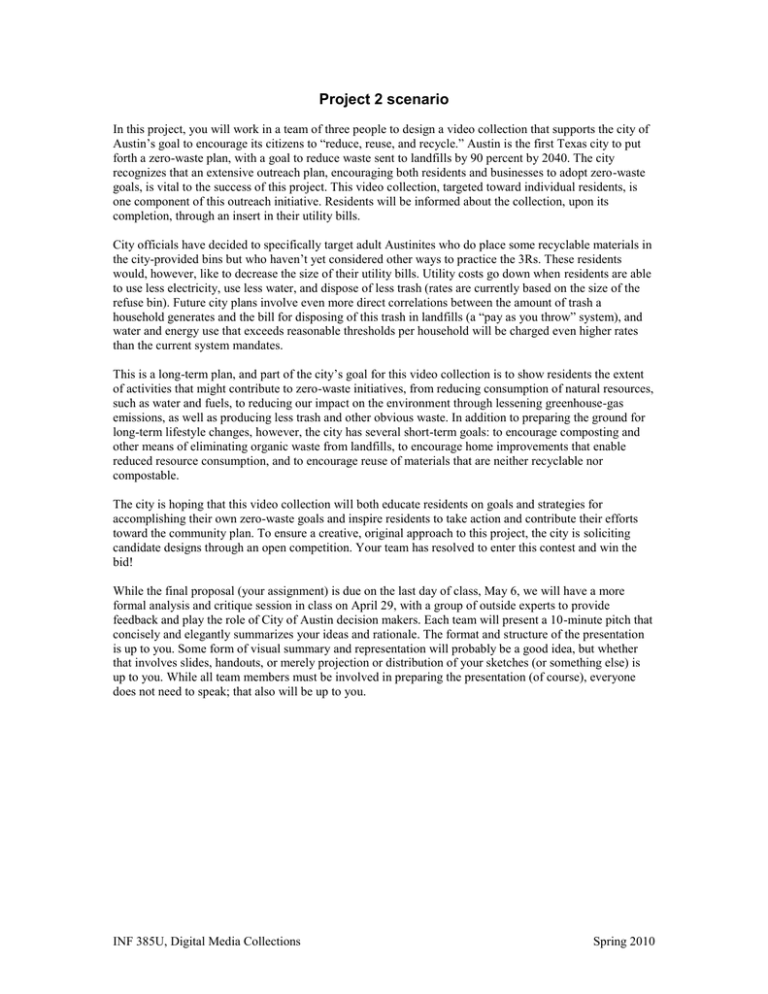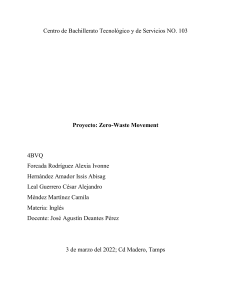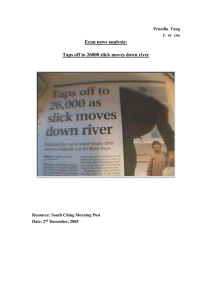Project 2 scenario and tasks for next week
advertisement

Project 2 scenario In this project, you will work in a team of three people to design a video collection that supports the city of Austin’s goal to encourage its citizens to “reduce, reuse, and recycle.” Austin is the first Texas city to put forth a zero-waste plan, with a goal to reduce waste sent to landfills by 90 percent by 2040. The city recognizes that an extensive outreach plan, encouraging both residents and businesses to adopt zero-waste goals, is vital to the success of this project. This video collection, targeted toward individual residents, is one component of this outreach initiative. Residents will be informed about the collection, upon its completion, through an insert in their utility bills. City officials have decided to specifically target adult Austinites who do place some recyclable materials in the city-provided bins but who haven’t yet considered other ways to practice the 3Rs. These residents would, however, like to decrease the size of their utility bills. Utility costs go down when residents are able to use less electricity, use less water, and dispose of less trash (rates are currently based on the size of the refuse bin). Future city plans involve even more direct correlations between the amount of trash a household generates and the bill for disposing of this trash in landfills (a “pay as you throw” system), and water and energy use that exceeds reasonable thresholds per household will be charged even higher rates than the current system mandates. This is a long-term plan, and part of the city’s goal for this video collection is to show residents the extent of activities that might contribute to zero-waste initiatives, from reducing consumption of natural resources, such as water and fuels, to reducing our impact on the environment through lessening greenhouse-gas emissions, as well as producing less trash and other obvious waste. In addition to preparing the ground for long-term lifestyle changes, however, the city has several short-term goals: to encourage composting and other means of eliminating organic waste from landfills, to encourage home improvements that enable reduced resource consumption, and to encourage reuse of materials that are neither recyclable nor compostable. The city is hoping that this video collection will both educate residents on goals and strategies for accomplishing their own zero-waste goals and inspire residents to take action and contribute their efforts toward the community plan. To ensure a creative, original approach to this project, the city is soliciting candidate designs through an open competition. Your team has resolved to enter this contest and win the bid! While the final proposal (your assignment) is due on the last day of class, May 6, we will have a more formal analysis and critique session in class on April 29, with a group of outside experts to provide feedback and play the role of City of Austin decision makers. Each team will present a 10-minute pitch that concisely and elegantly summarizes your ideas and rationale. The format and structure of the presentation is up to you. Some form of visual summary and representation will probably be a good idea, but whether that involves slides, handouts, or merely projection or distribution of your sketches (or something else) is up to you. While all team members must be involved in preparing the presentation (of course), everyone does not need to speak; that also will be up to you. INF 385U, Digital Media Collections Spring 2010 Project tasks for next week’s class (April 1) For next week’s class, perform the following tasks as indivduals: 1. 2. 3. 4. Write a preliminary reflection, as you did for the first project. (Details on this activity can be found on the Schedule page of the course Web site, for week 2). Ask at least two potential users to answer the questions on the provided user research template (the questions are similar to the first project but slightly altered to reflect the project 2 scenario). Find, describe, and download seven video files to contribute to the source library for project 2 (more detailed instructions follow). As necessary, begin conducting subject research on zero-waste initiatives, composting, and municipal reduce, reuse, and recycle programs, to fill in gaps in your knowledge. While you are not required to bring any research notes to class next week, you might compile notes to share with your group. While these activities are individual work, your group may wish to coordinate tasks 2, 3, and 4, so that you obtain the data most useful to your project. In class next week, we will have time for each group to share each member’s individual reflection and create a group document that incorporates everyone’s individual thoughts. Video collection instructions The content of the video files that you select is up to you. However, to conserve our disk space, please restrict your selections to files under 15 minutes in duration. Additionally, each person should ensure that at least one of the seven videos they collect is accessible to deaf and hard of hearing people (has closed captions or is signed). Rename each file with a descriptive name, but keep track of its original filename as well. For each video, you will need to supply the following metadata: Filename (the one you created). Original filename (the one used wherever you found the video). Title. Sentence summary (really, one sentence). Abstract (a longer description of the video’s contents). A spreadsheet template, compatible with Excel 2004, will be sent via e-mail to use in compiling this metadata. The name of the file is INF 385U project 2 videos.xls. Please rename this file to append your last name at the end of the original filename. For example: INF 385U project 2 videos Feinberg.xls. By the time that class begins on April 1, send your spreadsheet to me via e-mail (feinberg@ischool.utexas.edu) and upload your seven videos to the videos-new folder on the scirocco server, just as you did with the files you wanted to add to the project 1 source library. (If you never got an iSchool account and thus don’t have access to the server, compress your video files into an archive and send them to me via e-mail.) To facilitate browsing the collected source library, we will import all the selected videos into a new Open Video toolkit library. I will also distribute the compiled spreadsheet of metadata. INF 385U, Digital Media Collections Spring 2010




